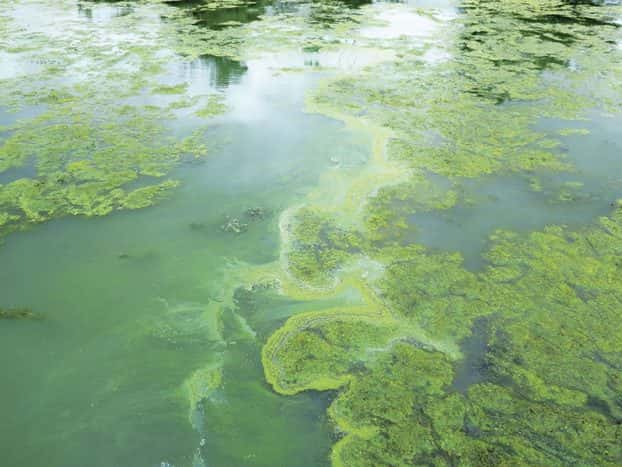The City of Austin will begin its fourth year of a five-year pilot program aimed at reducing harmful algae blooms on parts of Lady Bird Lake. A harmful algae bloom occurs when Cyanobacteria, or blue-green algae, produce toxins. The pilot program consists of applying lanthanum-modified clay in specific areas of the lake, which binds to phosphorus, a key source of nutrients for algae. Once bound into a mineral form, the phosphorus becomes unavailable to the algae. The idea is to essentially rob the algae of one of its primary food sources and reduce its growth.
The first application this year will take place on Monday, June 3, in three locations, with additional work also on June 4 if more time is needed. A second and third application are planned for July and August.
The contractor will apply the lanthanum-modified clay at:
- Red Bud Isle
- The boat ramp on the north shore of the lake, just west of I-35.
- The north shore of the lake between I-35 and the lagoon behind the Festival Beach Boat Ramp.
The second location is new and has been chosen for research purposes to help identify any unforeseen impacts on aquatic insects. No impacts are expected.
According to the City of Austin, results of the pilot program over the past three years have been mixed. At Red Bud Isle, there has been a reduction in the amount of harmful algae after each application in June. The July and August applications appear to hold the line without achieving any further reduction of the algae. By the time following June and the first application of the year rolls around, the algae has generally returned. This year, the City of Austin observed a recurrence early in the spring, but the rains over the past two months have reduced its presence. There was not much present on the lakes in mid-May.
East of I-35, the lanthanum-modified clay does not appear to be having any effect.
The pilot program costs $300,000 per year and is funded through the drainage charge, assessed on utility bills.
The first documented harmful algae bloom on Lady Bird Lake occurred in 2019 and one has occurred every year since then. Blooms have also occurred on Lake Austin, other Highland Lakes, and on Barton Creek. There may have been harmful algae blooms on other creeks and water bodies as well, but these have not been documented.
Harmful algae blooms can be fatal, and was linked to the deaths of several dogs in Austin in 2019. It’s recommended that people and pets avoid contact with algae, not drink water directly from the lake, and rinse off after contact with the water. Also, do not allow dogs to lick their fur prior to rinsing.





